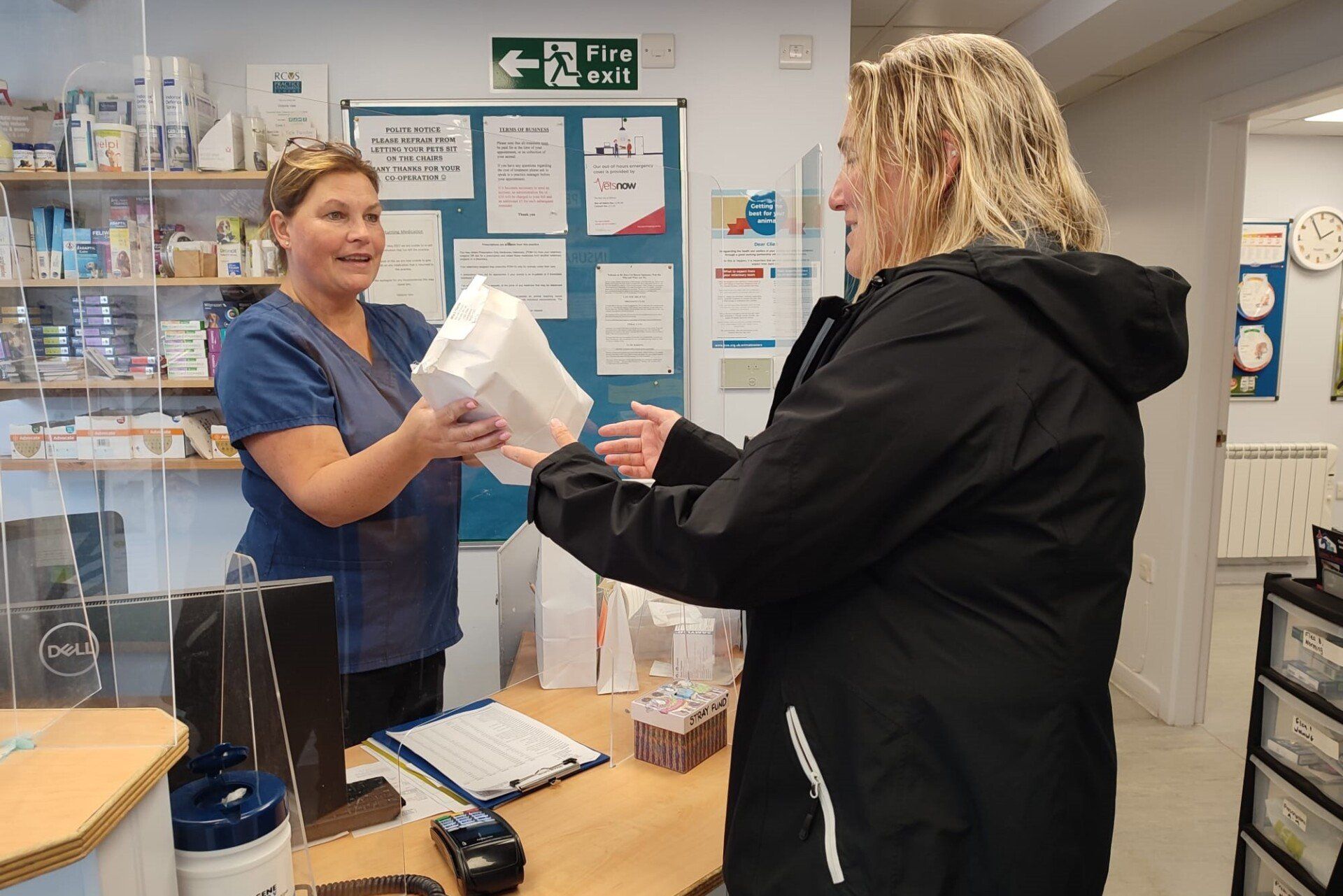Adverse Events and Pharmacovigilance
Pharmacovigilance: the science and activities behind detecting, assessing, and preventing adverse effects of veterinary medicines
Reporting suspected lack of expected efficacy for companion animal parasiticides
Although anecdotal concerns over potential resistance to commonly used small animal parasiticides have been raised, there is currently no objective evidence to indicate that resistance to these medications is occurring. Therefore, developing a better understanding of potential resistance to these types of veterinary medicines is a priority.
Take Home Message
SLEE reporting is essential for monitoring the effectiveness of treatments and for developing an objective evidence base to better understand any potential issues. The VMD welcomes reports of any suspected lack of expected efficacy and encourages vets and pet owners to report their concerns either directly to the VMD or to the Marketing Authorisation Holder.

Help the VMD monitor the effectiveness of parasiticide treatments
Increasing the number of suspected lack of expected efficacy (SLEE) reports that are received will help to develop an evidence base and gain a clearer understanding of the situation.
• Anyone can report suspected lack of expected efficacy (SLEE) of a veterinary medicine but, in line with the RCVS code of conduct and SQP Code of Practice, prescribers of veterinary medicines are particularly encouraged to do so.
• As reporting aims to include all suspected cases, it is not necessary to carry out an in-depth evaluation before submitting a SLEE report; cases received by the VMD are monitored and statistically analysed to determine the likelihood of a product problem.

Learn to recognise cases of suspected lack of expected efficacy
Suspected lack of expected efficacy is the apparent failure of an authorised veterinary medicine to have the expected efficacy in an animal, whether or not the product was used in accordance with the summary of product characteristics. Reasons to suspect a lack of efficacy of small animal parasiticide medications include:
• Poor clinical response despite appropriate parasiticide treatment for a suspected or proven parasitic burden.
• Development of clinical disease (including vector-borne disease) or death associated with suspected or proven parasitic burden, despite appropriate parasiticide treatment.
• Development of zoonotic disease in humans associated with exposure to a suspected or proven parasitic burden in companion animals, despite appropriate parasiticide treatment of those animals.
• Insufficient faecal egg count reduction (FECR) after anthelmintic treatment, even in the absence of clinical signs of parasitic disease.
• Shortened parasite reappearance period after parasiticide treatment, even in the absence of clinical signs of parasitic disease.

Understand the importance of reporting a SLEE
SLEE reports provide the VMD with the evidence to monitor efficacy in real-time, enabling early identification of potential issues and providing the evidence base to facilitate appropriate action. Reasons for a lack of expected efficacy of an antiparasitic product include:
• Actual reduced efficacy of the product, such as batch quality problems, resistance, incorrect storage, or use of expired product.
• Non-product related factors, such as, re-infection, unrealistic expectations of product efficacy against the target parasite, change in parasite species, concurrent disease, incorrect dosing, failure to administer product correctly; dosing at inappropriate times.

How to report
SLEEs can be reported directly to the VMD using the online reporting form or directly to the Marketing Authorisation Holder (MAH). As MAHs and the VMD share anonymised versions of the reports they receive, it is not necessary to report to both.
As much detail as possible should be included in the report to enable a full evaluation. Before reporting, ensure that you have the following minimum information to hand:
• Reporter details: Wherever possible this should include the name and address of the primary reporter. This is the prescriber or the user of the product, such as the pet owner.
• Another additional unique identifier: For example, initials or a geographic location.
• Patient details: species. Including additional information such as animal sex, age and weight is beneficial).
• Veterinary medicine concerned: Product name.
• Adverse event details: Narrative of the SLEE case, including relevant dates, animal details and dose given.
For additional assistance or advice on reporting adverse events, guidance is available on GOV.UK or, email the VMD’s Pharmacovigilance Team adverse.events@vmd.gov.uk.

Actions that can be taken after a SLEE report is evaluated
Statistical analysis is used to determine whether there is a significant number of reports with the same or similar event, which could indicate a problem with a product. When appropriate, action following a SLEE report can be taken. The VMD could look into:
• Placing additional warnings on the product’s packaging.
• Changing the way a product is used.
• Informing prescribers of the concerns (for example through letters, bulletins, or electronic media).
